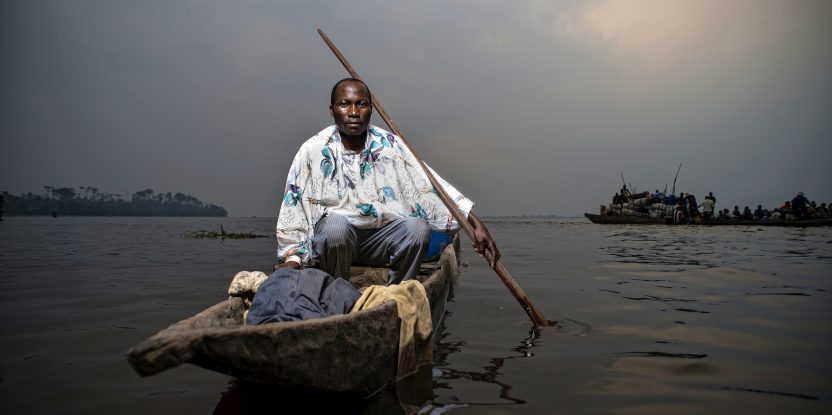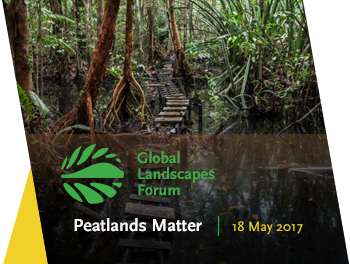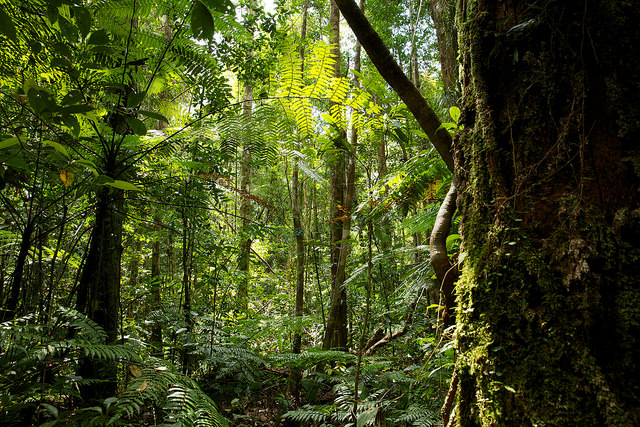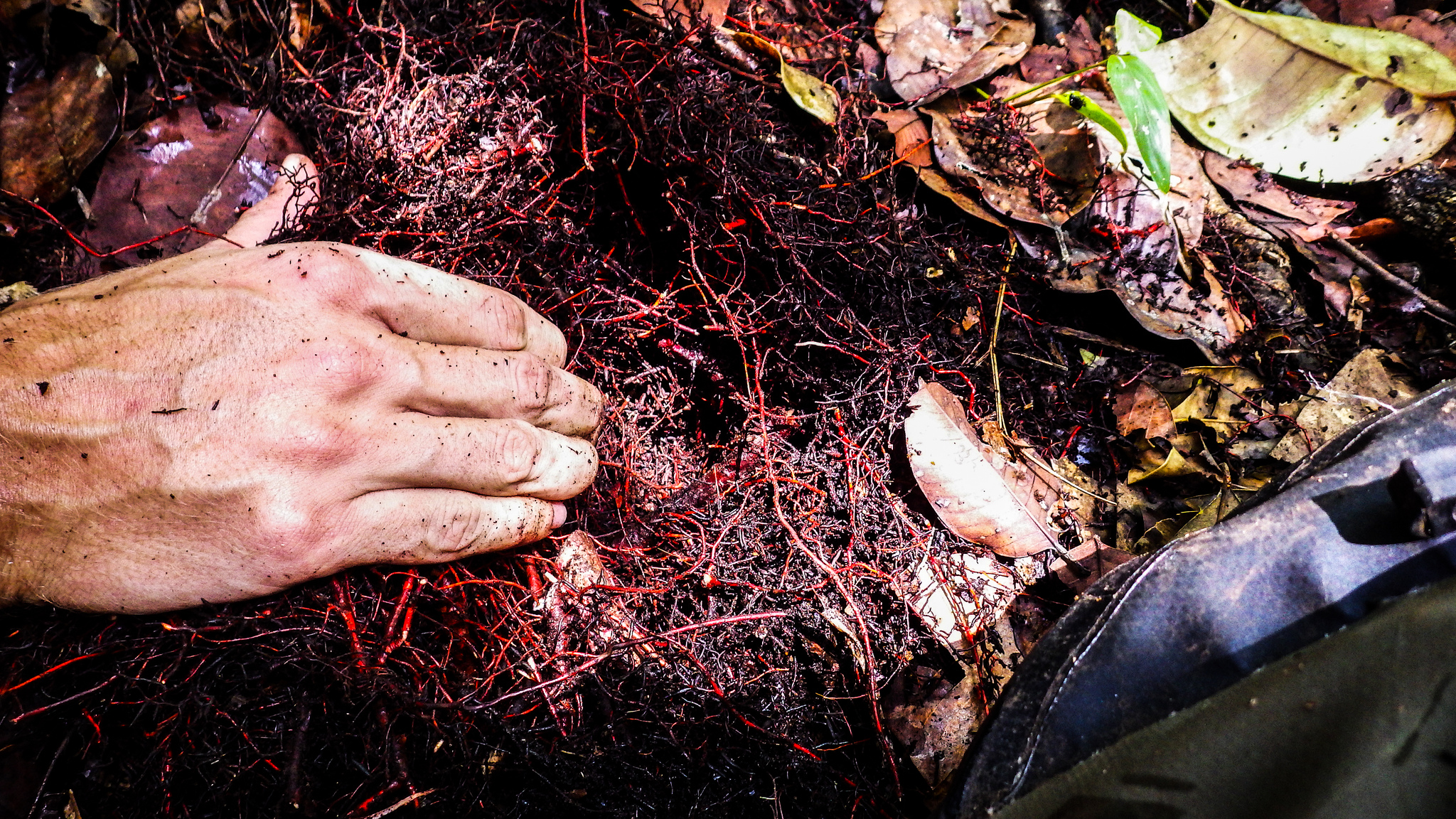
The Democratic Republic of Congo (DRC) has long been known for the biodiversity and carbon storage capacity of its vast forests. Now, there is a need to explore the potential of newly-discovered peatland to help further keep a lid on its carbon emissions, according to Denis Jean Sonwa, a senior scientist at the Center for International Forestry Research (CIFOR).
Scientists recently discovered what they call ‘the world’s largest tropical peatland’ in a remote part of the Congo Basin. The 145,000 square-kilometer area, larger than the size of England, is believed to hold the equivalent of three years’ worth of global emissions. Known as the ‘Cuvette Centrale’, the area straddles the DRC’s border with the Republic of Congo.
The DRC is well-informed to bring peatlands into its Reducing Emissions from Deforestation and Forest Degradation in Developing Countries (REDD) process, says Sonwa, who is based in CIFOR’s office in Yaoundé, Cameroon.
“The countries of Central Africa are known for their biodiversity,” he says. “It is thus extremely important that the DRC, with support from international donors and partners, continue protecting its peatland areas.”
Sonwa spoke to Forests News about how the DRC can move forward on peatland preservation for carbon storage purposes.
What role can peatlands play in carbon storage in the DRC?
Peatlands matter in the DRC. It constitutes a fragile ecological environment. With regards to the carbon storage process, the DRC is adopting the REDD process, and we know that peatlands store vast amounts of peat carbon in the soil.
For the REDD process, the DRC needs to know what carbon pools and stocks it holds. In the past, we knew the carbon stocks in the forestland much better. But recent discoveries mention large quantities of peat in the DRC and even in neighboring Congo. This ‘new’ peat needs to be added to the existing forest carbon stocks identified earlier because it constitutes important supplemental information on carbon stocks, which are related to certain aspects of climate change.
The recent discovery of large quantities of peat has now ranked the DRC and Congo among the world’s leading tropical peatland countries, just behind Indonesia, putting them and the Congo Basin very high on the roster of global statistics on peatland and carbon pools.
How important is the DRC’s Central Basin peatland?
The DRC has the biggest forest in Central Africa and thus has great biodiversity. The peatland discovered in the Central Basin is important for its significant biodiversity.
Here, carbon storage is of ecological importance and biodiversity is important to the environment. The area where peat was discovered is part of an identified landscape for biodiversity conservation. It straddles the DRC and the Republic of Congo.
The recent discovery of large quantities of peat has now ranked the DRC and Congo among the world’s leading tropical peatland countries, just behind Indonesia, putting them and the Congo Basin very high on the roster of global statistics on peatland and carbon pools.
What are some challenges regarding the preservation of this peatland?
The discovery of this peatland offers a great opportunity for participation in the REDD process, but there are major problems such as preventing drainage to prepare lands for other activities- mainly agriculture, as was done in some parts of the world where drained lands were used essentially as farmland.
For agricultural expansion globally, the Congo Basin countries are considered to be the world’s next frontier. People hope to open lands for agriculture because agriculture flourishes in the peatlands. Hence the carbon pool areas, including peatlands, must be very well-protected.
The first challenge is to protect these lands. The second challenge concerns commitment to the REDD process. Carbon pools, after being identified, supposedly can be measured and verified. But Central African peatlands have long been neglected because the technology and facilities needed to identify these areas have not always been available.
Investments for identifying peat areas and carbon stocks in this distinctive environment have been slow. For the REDD process, the country must be able to monitor the quantity of peat and greenhouse gas emissions.
Will the country have the capacity to measure the peat and evaluate the emissions found in this environment? Time will tell.
How is climate change affecting the peatlands of Central Africa?
Climate change is a very important ecological matter. In the peatlands, the water level affects the level of emissions, and that level can be impacted by climate change. Analyses of climate change show that Central Africa is drying out. A decline in rainfall levels could seriously affect the level of peat carbon storage.
How might the citizens of the DRC benefit from peatland preservation?
The DRC communities can benefit from peatlands on the whole and use them for a bit of small-scale farming. More importantly, if the country derives financial gain from carbon, the people could benefit directly from the fact that the country has sustainably managed peatland.
How do you see the future of peatland preservation in the DRC and the rest of Central Africa?
We have learned that these peatlands are now being protected and that they play a twofold role: carbon sequestration and biodiversity conservation.
The countries of Central Africa are known for their biodiversity. It is extremely important that the DRC, with support from international donors and partners, continue protecting the peatland areas.
Central Africa is learning lessons from the examples of other countries that poorly managed peatlands. The DRC is fortunate to be discovering peatlands that are already protected, and therefore it can avoid the mistakes made by other tropical countries that hastened to allocate these lands to a type of agriculture that was not sustainable.
We want you to share Forests News content, which is licensed under Creative Commons Attribution-NonCommercial-ShareAlike 4.0 International (CC BY-NC-SA 4.0). This means you are free to redistribute our material for non-commercial purposes. All we ask is that you give Forests News appropriate credit and link to the original Forests News content, indicate if changes were made, and distribute your contributions under the same Creative Commons license. You must notify Forests News if you repost, reprint or reuse our materials by contacting forestsnews@cifor-icraf.org.


